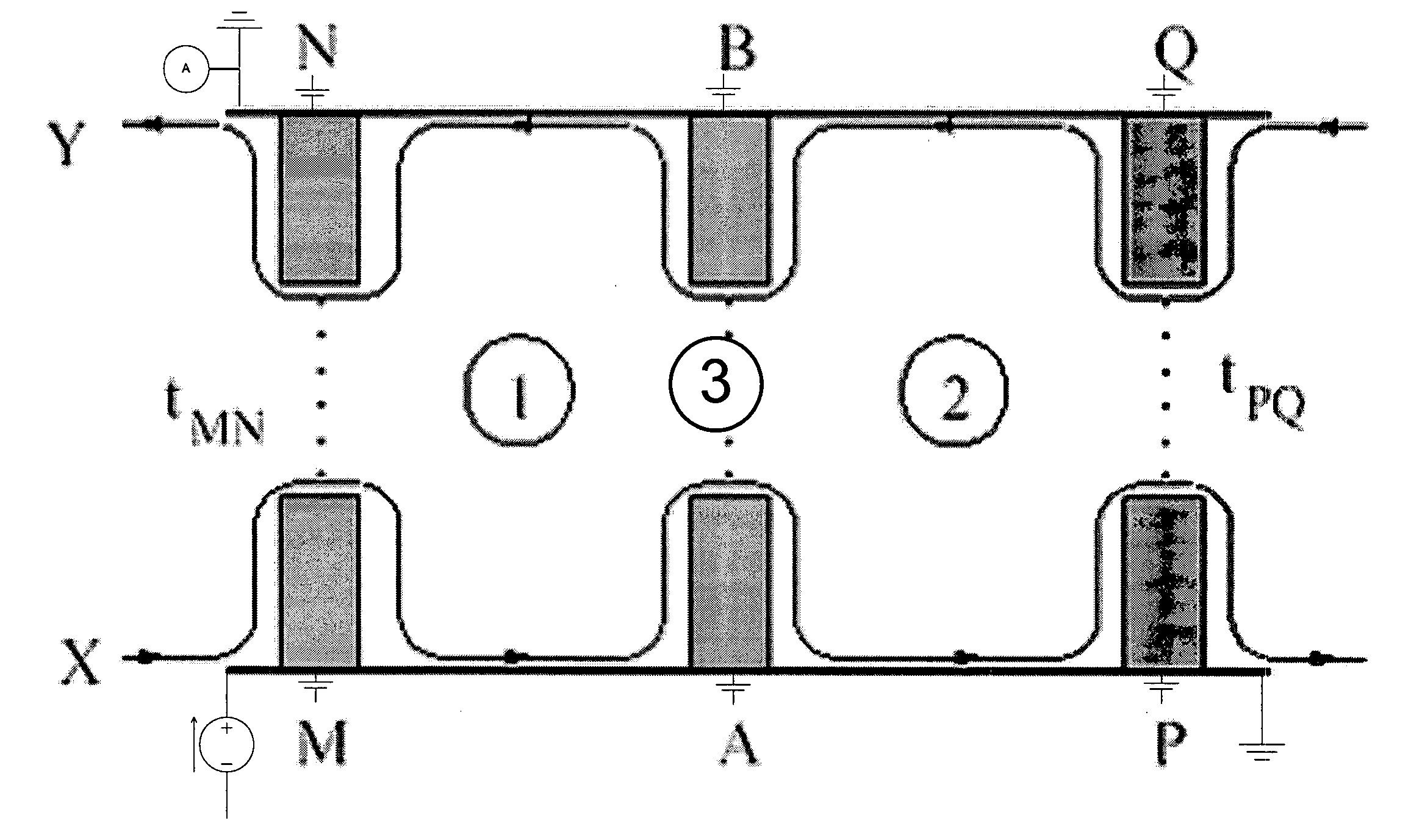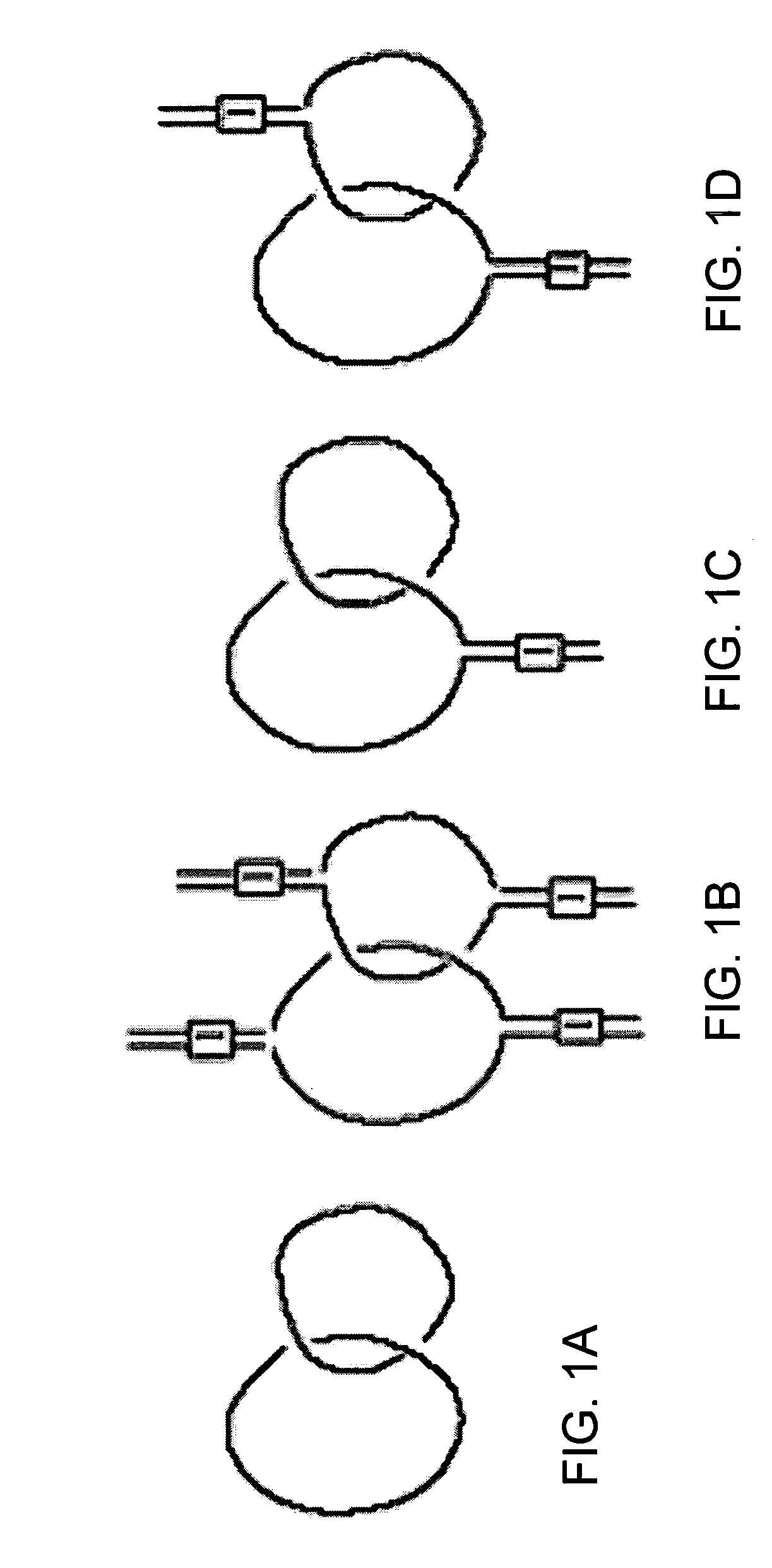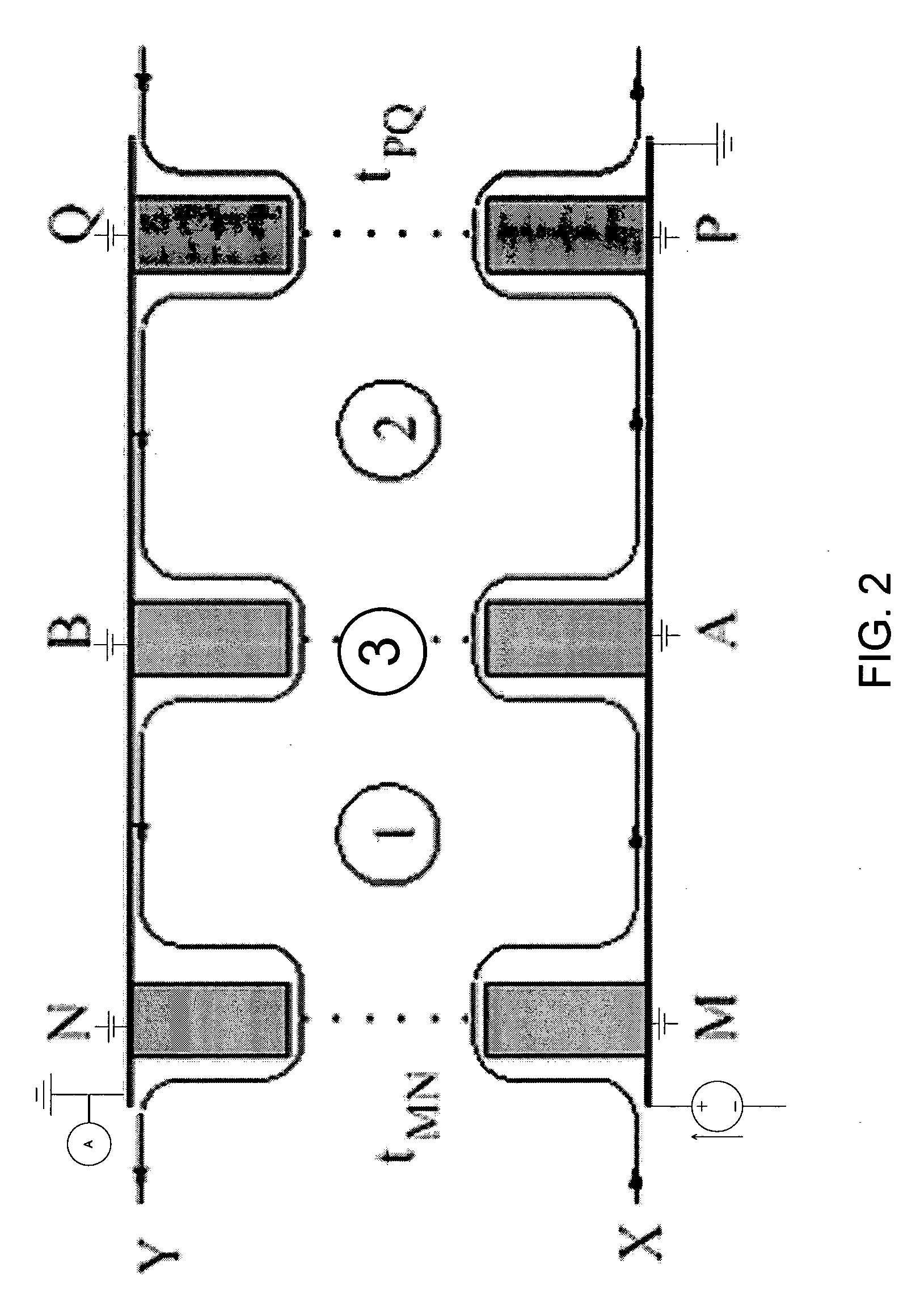Quasi-particle interferometry for logical gates
a technology of logical gates and quasi-particles, applied in the direction of superconductor devices, pulse techniques, instruments, etc., can solve the problems of difficult disentanglement of phase associated with braiding, and achieve the effect of convenient measuremen
- Summary
- Abstract
- Description
- Claims
- Application Information
AI Technical Summary
Benefits of technology
Problems solved by technology
Method used
Image
Examples
Embodiment Construction
[0022] The Pfaffian state may be viewed as a quantum Hall state of p−wave paired fermions. The quasiparticles in this phase have charge −e / 4 (not e / 2, as one might naively assume from the Landau-level filling fraction v=2+½; this emphasizes the importance of an experiment, such as described in V. J. Goldman and B. Su, Science 267, 1010 (1995), to measure the quasiparticle charge at v=5 / 2). When there are 2n quasiparticles at fixed positions in the system, there is a 2n-1-dimensional degenerate space of states. Exchanging and braiding quasiparticles is related to the action of the 2n-dimensional Clifford algebra on this space, as has recently been confirmed by direct numerical evaluation of the Berry matrices. In particular, two charge −e / 4 quasiparticles can “fuse” to form a charge −e / 2 quasiparticle either with or without a neutral fermion in its core. One may view the charge −e / 2 quasiparticle as the quantum Hall incarnation of a superconducting vortex with a fermionic zero mode i...
PUM
 Login to View More
Login to View More Abstract
Description
Claims
Application Information
 Login to View More
Login to View More - R&D
- Intellectual Property
- Life Sciences
- Materials
- Tech Scout
- Unparalleled Data Quality
- Higher Quality Content
- 60% Fewer Hallucinations
Browse by: Latest US Patents, China's latest patents, Technical Efficacy Thesaurus, Application Domain, Technology Topic, Popular Technical Reports.
© 2025 PatSnap. All rights reserved.Legal|Privacy policy|Modern Slavery Act Transparency Statement|Sitemap|About US| Contact US: help@patsnap.com



